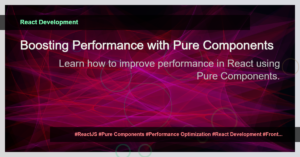C#: IEnumerable vs IQueryable
When working with collections or querying data in C#, you might come across two commonly used interfaces: IEnumerable and IQueryable. While both interfaces provide ways to work with collections, they have some key differences in terms of functionality and performance. Understanding these differences is crucial for optimizing your code and achieving better performance.
IEnumerable
IEnumerable is the most fundamental interface used for working with collections in C# and represents a forward-only cursor to access a collection of objects. It is part of the System.Collections namespace. When you use IEnumerable, you can perform basic operations such as sorting, filtering, and iterating over a collection.
Here’s an example of using IEnumerable to filter a collection of integers:
IEnumerable<int> numbers = new List<int> { 1, 2, 3, 4, 5 };
IEnumerable<int> evenNumbers = numbers.Where(n => n % 2 == 0);
In the above example, the Where method from the System.Linq namespace is used to filter the collection based on a condition. The result is an IEnumerable<int> containing only the even numbers.
IQueryable
IQueryable, on the other hand, is more powerful and extends the functionality of IEnumerable. It is designed for querying data from a data source, such as a database, and supports deferred execution of queries. While IEnumerable performs querying operations in-memory, IQueryable allows you to build complex queries that are executed on the data source.
Here’s an example of using IQueryable to query data from a database using LINQ to SQL:
IQueryable<Customer> customers = dbContext.Customers;
IQueryable<Customer> highValueCustomers = customers.Where(c => c.TotalOrderValue > 1000);
In the above example, customers is an IQueryable<Customer> representing a collection of customers in a database. The Where method is used to filter the customers based on a condition, and the query is executed on the database server, retrieving only the customers with a total order value greater than 1000.
Performance Considerations
When it comes to performance, using IQueryable can provide significant optimizations, especially when querying large datasets or remote data sources. By allowing the query to be executed on the data source, unnecessary data can be filtered out at the source, reducing network overhead and improving overall query performance.
In contrast, IEnumerable operations are performed in-memory, meaning that all the data is retrieved from the data source before applying any filtering or sorting operations. This can lead to higher memory usage and slower query execution, especially when dealing with large datasets.
Choosing Between IEnumerable and IQueryable
Now that you understand the differences between IEnumerable and IQueryable, how do you decide which one to use in your code? Here are some guidelines to help you make the right choice:
- If you are working with in-memory collections and need basic querying operations,
IEnumerableis sufficient and easier to work with. - If you are querying data from a database or a remote data source and need more advanced querying capabilities, such as filtering, sorting, or using complex expressions,
IQueryableis recommended for better performance. - If you need to perform localized operations on the entire collection and don’t require querying capabilities, you can convert an
IQueryabletoIEnumerableusing theToListorToArraymethods.
In summary, IEnumerable is suitable for basic querying operations on in-memory collections, while IQueryable is better suited for more advanced querying scenarios, especially when dealing with large datasets or remote data sources.
Remember to consider your specific requirements and performance considerations when choosing between IEnumerable and IQueryable in your C# applications.
I hope this article clarified the differences between IEnumerable and IQueryable in C# and provided some insights on when to use each interface. Happy coding!




